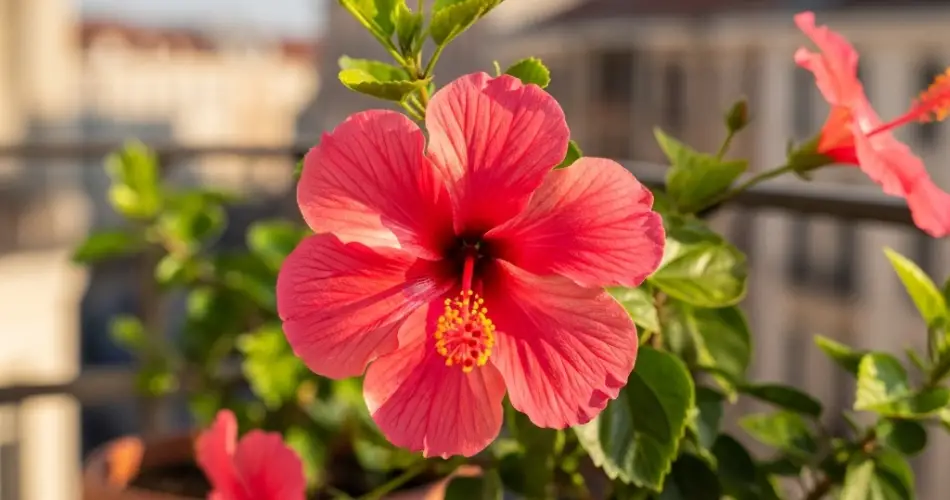Hibiscus plants are prized for their large, colorful blooms and tropical appearance. While they are often grown in garden beds, they also thrive in containers, making them ideal for patios, balconies, and small garden spaces. Growing hibiscus in containers gives you greater control over soil, sunlight, and temperature—plus, it’s easier to move them indoors during colder months. Whether you’re growing hardy or tropical varieties, this guide will walk you through everything you need to know about successfully growing hibiscus in containers.
Choosing the Right Hibiscus for Containers
There are two main types of hibiscus commonly grown in containers:
-
Tropical Hibiscus (Hibiscus rosa-sinensis): Known for vibrant, exotic flowers in a range of colors including red, yellow, orange, and pink. These are best suited for warm climates and must be brought indoors during cold weather.
-
Hardy Hibiscus (Hibiscus moscheutos or Hibiscus syriacus): These can tolerate colder temperatures and return year after year in zones 4–9, but can also be grown in containers for added flexibility.
When selecting a plant, choose a healthy specimen with no signs of pests or disease and look for vigorous growth and buds, which indicate active flowering potential.
Selecting the Right Container
A good container is essential to successful hibiscus growth. The pot should:
-
Be at least 12 to 16 inches in diameter and deep enough to support root growth.
-
Have adequate drainage holes to prevent root rot.
-
Be made of durable material like plastic, ceramic, or clay.
If your hibiscus outgrows its pot, repot it in a larger container during spring.
Best Soil for Container Hibiscus
Hibiscus needs well-draining, fertile soil with a slightly acidic to neutral pH (6.0–7.0). Use a high-quality potting mix rather than garden soil. For added drainage and aeration, mix in:
-
Perlite or coarse sand
-
Coconut coir or peat moss for moisture retention
-
A slow-release fertilizer to feed the plant gradually
Avoid using heavy or compacted soils that retain too much water.
Sunlight Requirements
Hibiscus plants love the sun and need at least 6 hours of direct sunlight daily to thrive and produce abundant blooms. Place your container in a sunny spot, such as:
-
A south or west-facing patio
-
A balcony with strong afternoon sun
-
Near a bright window if kept indoors
If growing indoors year-round, supplement with grow lights to ensure the plant receives enough light.
Watering Your Hibiscus
Hibiscus plants prefer consistently moist—but not soggy—soil. Container plants dry out faster than garden plants, especially during hot weather.
Watering tips:
-
Check the top inch of soil; water when it feels dry.
-
In hot weather, you may need to water daily.
-
In cooler months, reduce watering to avoid overwatering.
-
Use pots with drainage holes and empty saucers after watering.
Keep an eye out for wilting, yellowing leaves, or dropping buds—these can be signs of over- or underwatering.
Feeding for Best Blooms
Hibiscus are heavy feeders and benefit from regular fertilization.
-
Use a balanced, water-soluble fertilizer (such as 10-10-10 or 20-20-20) every two weeks during the growing season.
-
For better flowering, choose a fertilizer slightly higher in potassium (K).
-
Stop fertilizing in fall to allow the plant to rest before winter.
Avoid high-nitrogen fertilizers, which encourage foliage at the expense of flowers.
Pruning and Maintenance
Regular pruning helps maintain the plant’s shape and encourages bushier growth and more blooms.
-
Prune in early spring by cutting back leggy branches by about one-third.
-
Remove any dead, damaged, or crossing branches.
-
Deadhead faded flowers regularly to promote continued blooming.
You can also pinch back new growth during the season to keep the plant compact.
Pests and Problems
Container-grown hibiscus is still susceptible to common pests like:
-
Aphids
-
Spider mites
-
Whiteflies
-
Mealybugs
Use insecticidal soap or neem oil to manage infestations. Keep leaves clean and inspect your plant regularly.
Diseases such as root rot can be avoided with good drainage and proper watering habits.
Overwintering Hibiscus
If you’re growing tropical hibiscus, it needs protection from temperatures below 50°F (10°C).
To overwinter indoors:
-
Bring the plant inside before the first frost.
-
Place it near a bright window.
-
Reduce watering and stop fertilizing.
-
It may drop some leaves—this is normal during the adjustment period.
Hardy hibiscus grown in containers can be left outside in mild climates or moved to a sheltered location.
Conclusion
Growing hibiscus in containers is an excellent way to enjoy these tropical beauties in any space, from small balconies to spacious patios. With the right container, soil, light, and care, your hibiscus will reward you with vibrant blooms throughout the growing season. Plus, container gardening allows for greater mobility, so you can enjoy your hibiscus indoors when temperatures drop. Whether you’re new to gardening or a seasoned green thumb, container hibiscus can add a striking and colorful touch to your home or garden.



